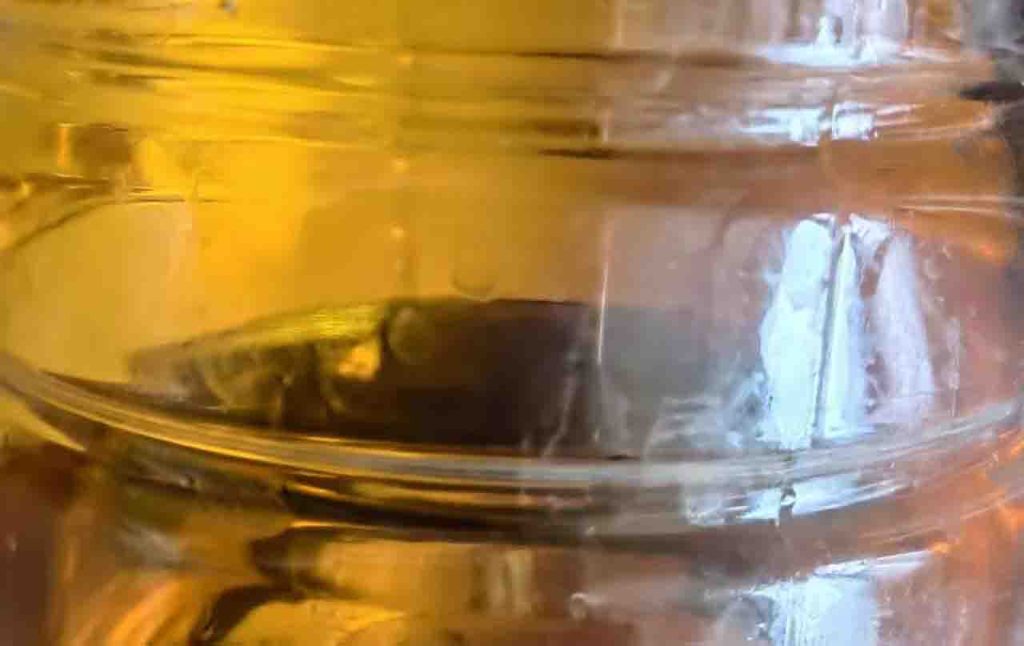What is Alkol éster?
Ester Alcohol is a Agente coalescente .The production of esters involves the combination of a carboxylic acid with an alcohol in a process known as esterification. This ester alcohol reaction, characterized by the union of an organic acid with an alcohol, yields an ester along with the generation of water. Ester alcohol, distinguished by its colorless and transparent oily liquid form, exhibits versatile properties. It not only functions as a highly effective coalescent agent within paints and coatings but also serves as a proficient organic solvent for adhesives. Notablemente, this substance, referred to as alcohol ester, presents itself as a water-based coalescent agent suitable for use in emulsions. It can be directly incorporated after suitable agitation or mixing.
What Does an Ester and Alcohol Make?
The interaction between an ester and an alcohol gives rise to a significant chemical process known as transesterification. This ester alcohol reaction involves the transformation of an existing ester into a distinct ester compound through its reaction with an alcohol. Transesterification plays a vital role in various chemical and industrial processes, offering a way to modify and synthesize esters with specific properties.
During transesterification, the ester’s original alkyl or acyl group is exchanged with the alkyl group of the alcohol. This process leads to the formation of a new ester while simultaneously releasing an alcohol molecule as a byproduct. The catalysts and ester alcohol reaction conditions employed in transesterification are chosen to facilitate the rearrangement of chemical bonds and the exchange of functional groups, ultimately yielding the desired ester compound.
What is Esterification?
Esterification is a fundamental chemical process wherein an organic acid and an alcohol undergo a reaction to yield an ester molecule and water as a byproduct. It involves the condensation ester alcohol reaction between a carboxylic acid and an alcohol, catalyzed by an acid or acid derivative.
Esterification has a big impact in manufacturing of paints and adhesives due to its effect on the formulation, performance, and durability of these products. In paints and adhesives, esterification refers is a chemical reaction between alcohol and carboxylic acid. This forms an ester compound along with water as a byproduct.
Esters can contribute to the volatile organic compound content of paints, impacting factors such as drying time and the overall environmental impact of the paint. Ester-based adhesives are known for their ability to provide strong bonds and adhesion to a variety of substrates. They can be designed to possess specific adhesive properties, such as flexibility, heat resistance, and compatibility with different materials. Manufacturers can fine-tune factors like viscosity, drying time, hardness, and adhesion strength.
Properties of Alkol éster
In terms of appearance, the ester alcohol presents as a clear and colorless liquid, having a mild sweet pungent odor. The clear nature of ester to alcohol allows for accurate color matching and consistency in formulations. In terms of solubility, lower ester with alcohol demonstrate a moderate degree of miscibility with water. This solubility allows for favorable interactions with water molecules. This property is very useful in paints and adhesive manufacturing.
The odor of the ester alcohol is described as having a mild sweet pungent odor. Its odor threshold of 7.1 parts per billion signifies the concentration at which the odor of the ester to alcohol becomes detectable. This low threshold highlights the compound’s potential to impact the overall sensory perception even at very low concentrations. If you noticed, paints and adhesives have a unique smell. Ester alcohols has direct cause to this property.
The solubility profile of the ester with alcohol reveals that it is completely soluble in ethanol and acetone. This solubility characteristic can be advantageous for formulations requiring these solvents, as it facilitates the creation of homogeneous mixtures and ensures uniform distribution of the ester alcohol within the final product.
Uses and Applications of Ester Alcohol
The utilization of alcohol to ester in the realm of paints and adhesive manufacturing encompasses a range of applications. These are just few of the uses and benefits of using ester with alcohol as an additive in manufacturing these kinds of products:
Better Formulation as Coalescing Agents
Coalescent agents assist in the fusion of individual paint particles as the solvent evaporates, resulting in the formation of a continuous and uniform film. Ester alcohols, when incorporated into paint formulations, aid in this coalescence process by reducing the surface tension between the dispersed particles. This encourages the particles to come together, leading to the creation of a smooth and cohesive paint film.
During adhesive application, the evaporation of solvents can make the formation of a strong bond. Ester alcohols contribute to the coalescence of adhesive components, enabling them to fuse together and create a robust adhesive joint. This results in adhesive bonds that exhibit enhanced strength, cohesion, and resistance to external stresses.
Decreases the Minimum Film Forming Temperature
Latex paints are widely used due to their low VOC content, ease of application, and environmental friendliness. 'Ñotho ar embargo, latex paints often face challenges related to the temperature at which they can effectively form a continuous film on a surface.
The inclusion of ester with alcohol in latex paint formulations serves to decrease the minimum film-forming temperature of end latex paint product. Minimum film-forming temperature refers to the temperature at which the polymer particles in the paint coalesce and form a continuous film as water evaporates. When adding ester alcohol, latex paint’s the minimum film-forming temperature will be at 90°C.
This is significant for paint application, especially in colder environments or during seasons when temperature fluctuations are common. By lowering the minimum film-forming temperature, paints formulated with ester with alcohol can achieve proper film formation even under conditions where conventional latex paints might struggle.
Weather Resistance
Incorporating ester alcohols into paint formulations can improve the durability of the paint film against factors such as sunlight, rain, humidity, and temperature fluctuations. Ester alcohols can contribute to the formation of a protective barrier that shields the painted surface from ultraviolet (UV) radiation, which can cause color fading and degradation of the paint film. The inherent chemical stability of alcohol to ester can help prevent premature cracking, peeling, or blistering of the paint due to exposure to moisture and temperature changes.
The weather-resistant properties of ester with alcohols contribute to the longevity of coated surfaces and bonded materials, reducing the need for frequent maintenance and replacements. This is especially advantageous in architectural coatings, automotive finishes, and outdoor adhesives.
No Additional Treatment Needed Against Cold Temperature
Conventional paints and adhesives may face the risk of damage due to freezing temperatures. This can lead to compromised performance, reduced durability, and even structural issues. 'Ñotho ar embargo, by using alcohol to ester in the manufacturing process, paints and adhesives gain a unique property that allows them to withstand extreme cold without requiring further treatments or interventions.
Ester alcohols contribute to this protective ability by altering the characteristics of the final products. These compounds can modify the freezing point of the formulations, making them more resistant to freezing even in low temperatures. Komongu ar nt'uni, surfaces coated with paints containing ester with alcohols remain intact and well-adhered, and bonded materials held together by adhesive formulations maintain their strength and stability, regardless of winter weather challenges.
Better Hardness and Durability
Incorporating alcohol to ester into formulations can lead to improved hardness of the dried paint film. A harder paint surface is more resistant to abrasion, impacts, and wear, making it suitable for high-traffic areas or surfaces that encounter frequent use. The presence of alcohol to ester can contribute to the crosslinking of polymer chains within the paint, resulting in a stronger and more resilient coating that withstands mechanical stress and maintains its appearance for an extended period.
Adhesives formulated with ester with alcohols can exhibit greater cohesive strength, ensuring that the bond remains intact even under stress or adverse conditions. This is especially valuable in applications where adhesives are subjected to forces such as tension, shear, or impact.
Can be Used as a Solvent in Metal Cleaning
Ester to alcohols act as powerful solvents that can penetrate and lift stubborn deposits from the surface of metals. Their chemical structure allows them to interact with a wide range of substances, breaking down and dispersing contaminants that might compromise the metal’s performance or appearance.
The use of ester with alcohols as solvents in metal cleaning offers several advantages. These solvents are often chosen for their relatively low toxicity and favorable environmental profile compared to some conventional solvents. This aligns with the increasing emphasis on environmentally friendly and sustainable industrial practices. Adicionalmente, ester to alcohols’ ability to evaporate at controlled rates can lead to efficient cleaning processes with minimal residue, resulting in cleaned metal surfaces that are ready for subsequent treatments or coatings.
Alcohol Ester 12 is a Film forming auxiliary,
2,2,4-TRIMETHYL-1,3-PENTANEDIOL 1-MONOISOBUTYRATE which the CAS code is 25265-77-4.If your coatings, paints request it,pls let us know. we would like to supply you better ester alcohol.
I believe that this kind of coating additive can greatly save the cost of raw materials for your production. In terms of performance, you can also continuously improve the ability of your overall formula.


